Eminent Technology TRW-17 Rotary Subwoofer
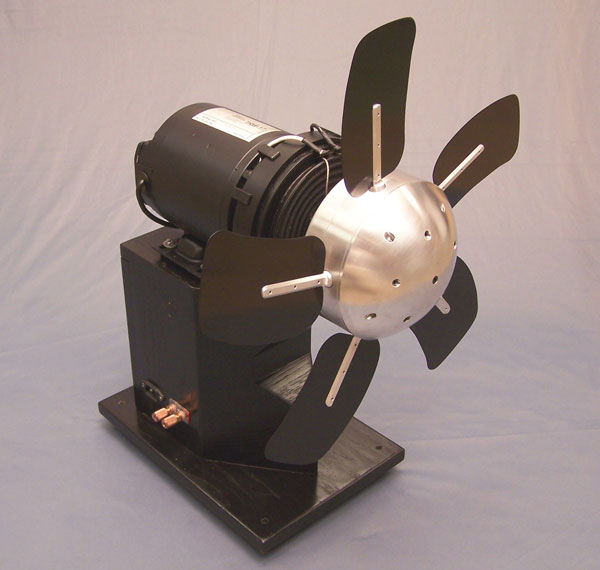
And now for something completely differenta subwoofer that looks like a fan and can reproduce frequencies down to 1Hz and below. Yep, you read that right1Hz and below. Developed by Bruce Thigpen and available from Eminent Technology, the Thigpen Rotary Woofer Model 17 (TRW-17) breaks entirely new ground at the very bottom of the sonic spectrum.
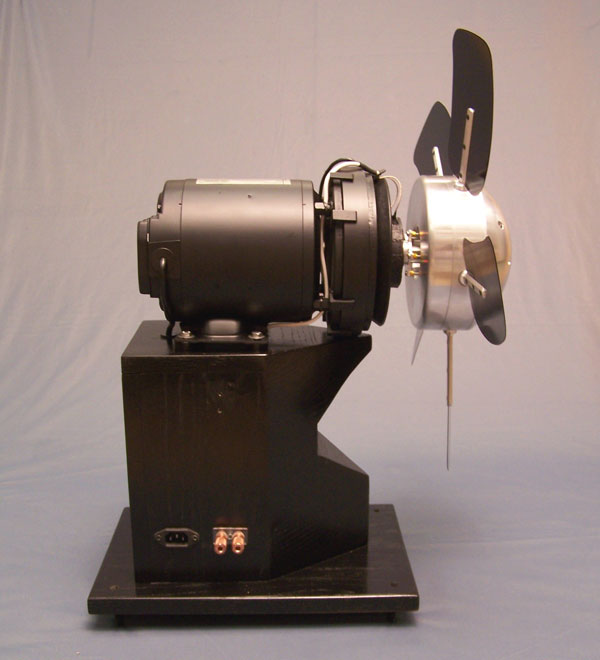
The TRW-17 is nothing like a conventional subwoofer. A motor spins a set of blades at a constant speedtypically 600 to 800 rpmand the incoming audio signal modulates the pitch (angle) of the blades in correspondence with the signal's waveform. This launches an acoustic sound wave both forward and backward from the spinning blades. The greater the change in blade pitch, the greater the amplitude of the resulting sound wave.
A conventional cone diaphragm loses much of its efficiency as the frequency drops below 20Hzin fact, each time the frequency is cut in half, the diaphragm must displace four times as much air in order to achieve the same output level. By contrast, the acoustic impedance of TRW-17 is much more closely matched to the surrounding air, allowing it to reproduce much lower frequencies at high levels than any cone-based sub can manage. For example, if the frequency halves, the blades rotate twice as many times per cycle, effectively doubling the "area" of the "diaphragm." Combined with room gain, this allows a relatively flat frequency response down to 1Hz in most listening rooms.
Even better, because the acoustic impedance is matched much more closely, the TRW-17 needs less amplifier power to achieve the same acoustic output as a conventional subwoofer. For example, if a typical subwoofer requires 500 watts to achieve an audible output at 20Hz, the TRW-17 would need only 100W for the same sound pressure level at that frequency.
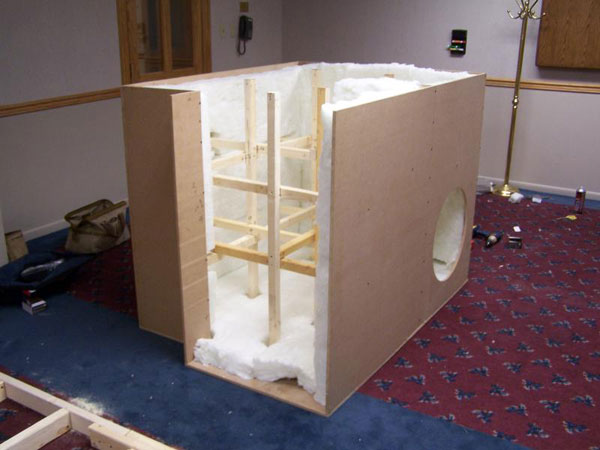
Of course, nothing comes without cost, and the TRW-17 is no exception. For one thing, it requires a manifold chamber in front of the unit to absorb the random noise of the blades rotating. In the photo above, a manifold is being built for a trade-show demo; the blades will be positioned in the circular cutout.
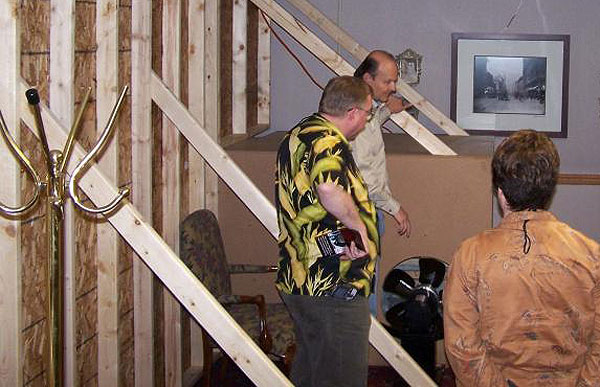
Because the effective radiating area is so large, the TRW-17 also requires a huge backwave chamber, which is typically an entire room, attic, or basement. In this photo, a wall has been built into the trade-show demo room, separating the listening space from the sub's "enclosure" (which is half of the room), with an opening for the manifold chamber. Thigpen is explaining how the TRW-17 works to showgoers; the blades can be seen in the manifold's circular cutout near the floor.
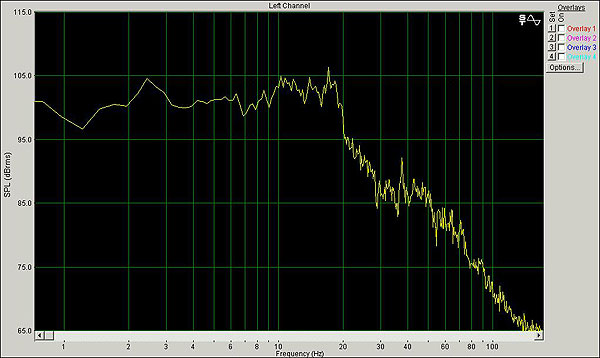
As you can see in this measurement graph, the TRW-17 can output more than 95dB SPL from 20Hz down to less than 1Hz. Can humans even hear that low? Thigpen says yes, and he has conducted listening tests to prove it. However, very high SPLs are required because our hearing system is so insensitive to such low frequencies. Does this put listeners at risk for hearing damage? I don't know, and neither does Thigpen, but he suspects not. I intend to do more research on this point.
Another obvious feature of the measurement graph shown here is that the response falls off rapidly above 20Hz. This is due in part to the electronics, but it's also the flip side of the well-matched acoustic impedance at low frequenciesas the frequency rises, the number of blade rotations per cycle decreases. This rolloff could be mitigated by spinning the blades faster, but that would also increase blade noise, making it audible in the listening room, even with the manifold chamber.
The TRW-17's specified frequency range is 1 to 30Hz (±4dB) with a maximum acoustic output greater than 115dB SPL from 1 to 20Hz. As a result, a conventional sub is required to fill in from there to the point at which the main speakers take over, which is typically 80Hz or so.
How much to rock the house this hard? The TRW-17 itself goes for $12,900, and the motor controller adds another $350. Eminent Technology also sells an amp and crossover for $700. Then there's the design and installation of the manifold and backwave chambers, which is typically $8000 to $12,000, bringing the grand total to somewhere between $22,000 and $26,000. But nothing re-creates earthquakes and rocket launches like true infrasonics, and nothing else on the market can get anywhere close to those frequencies, making this the only game in town for those who really want to get down.





























































